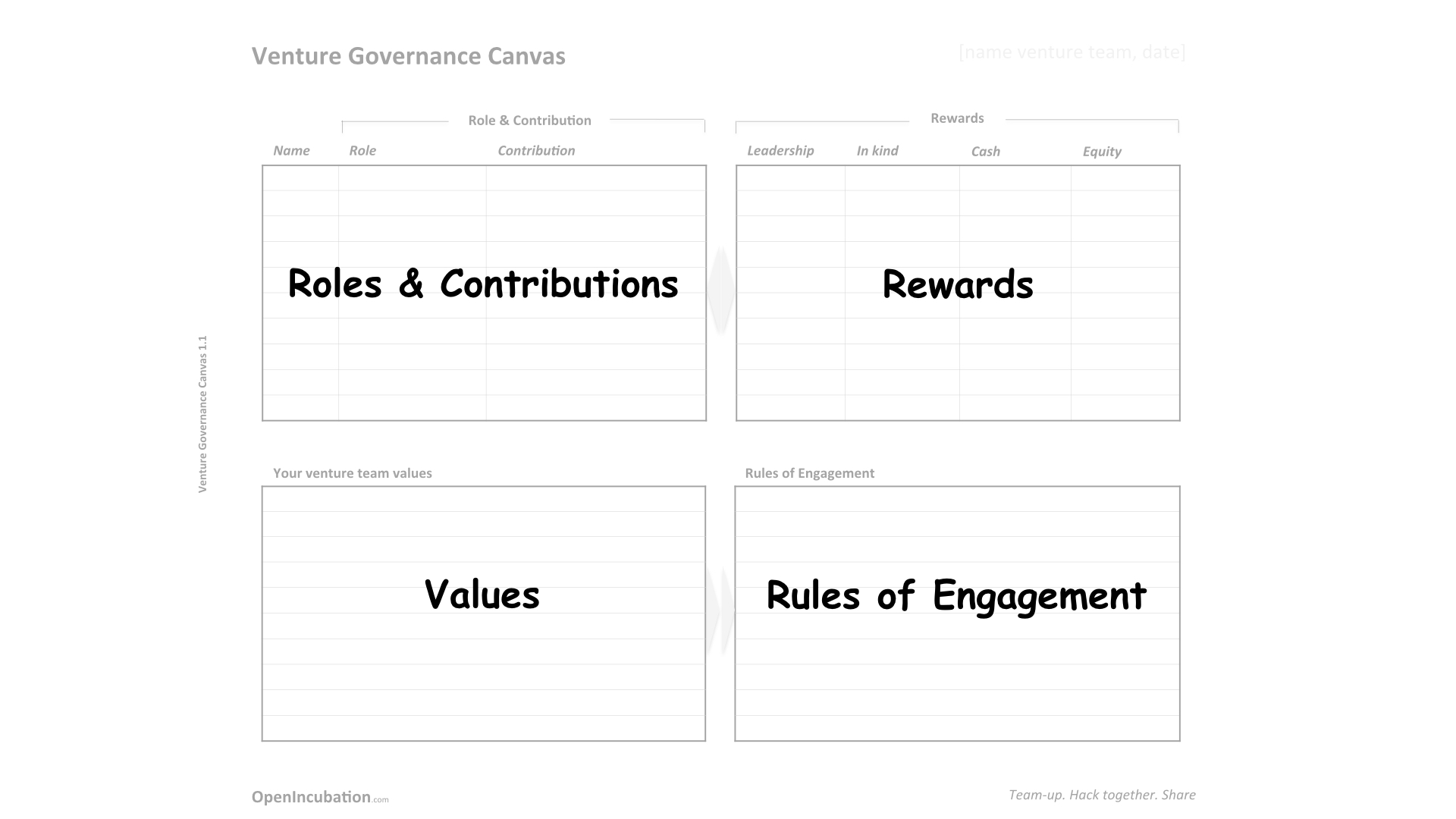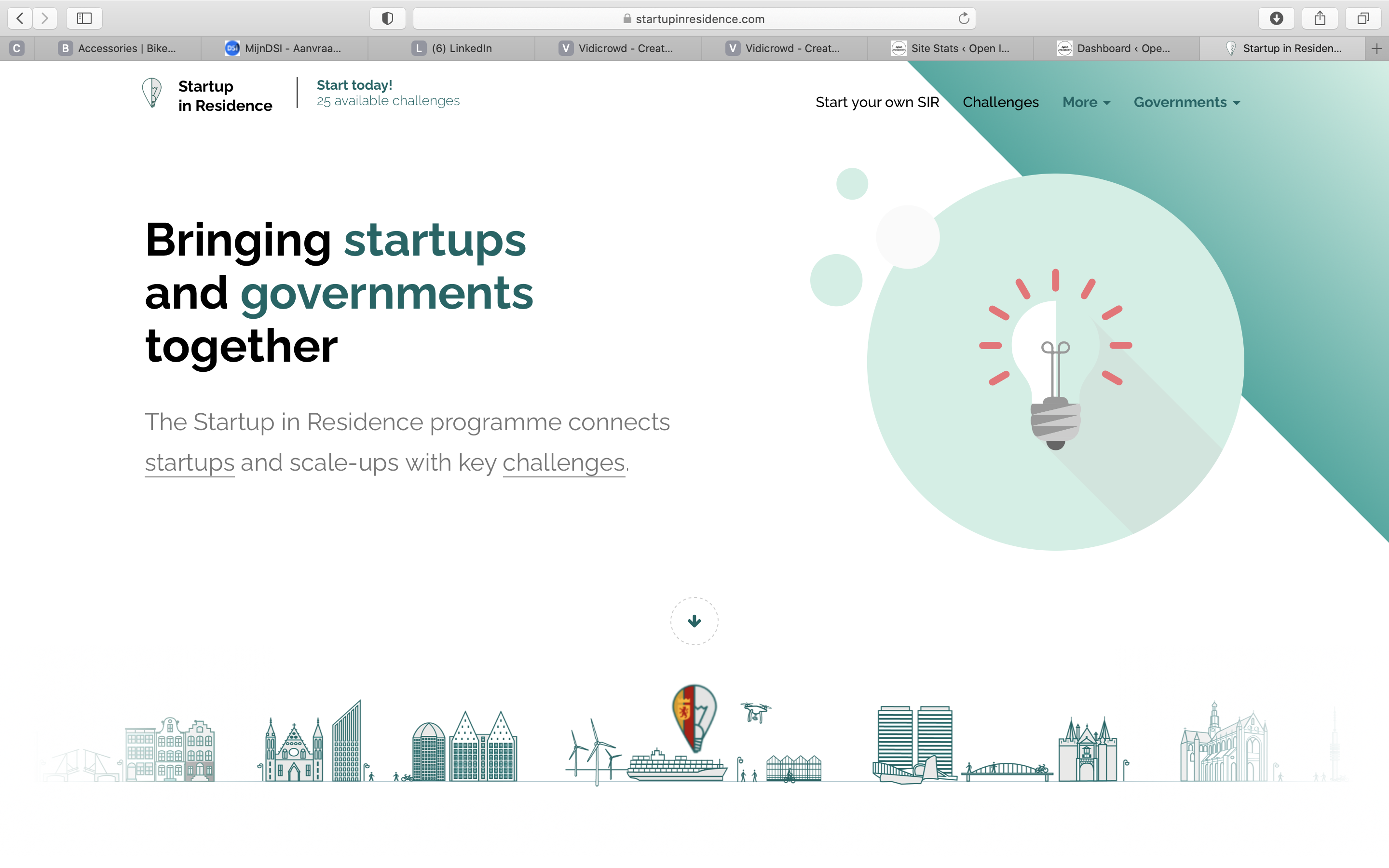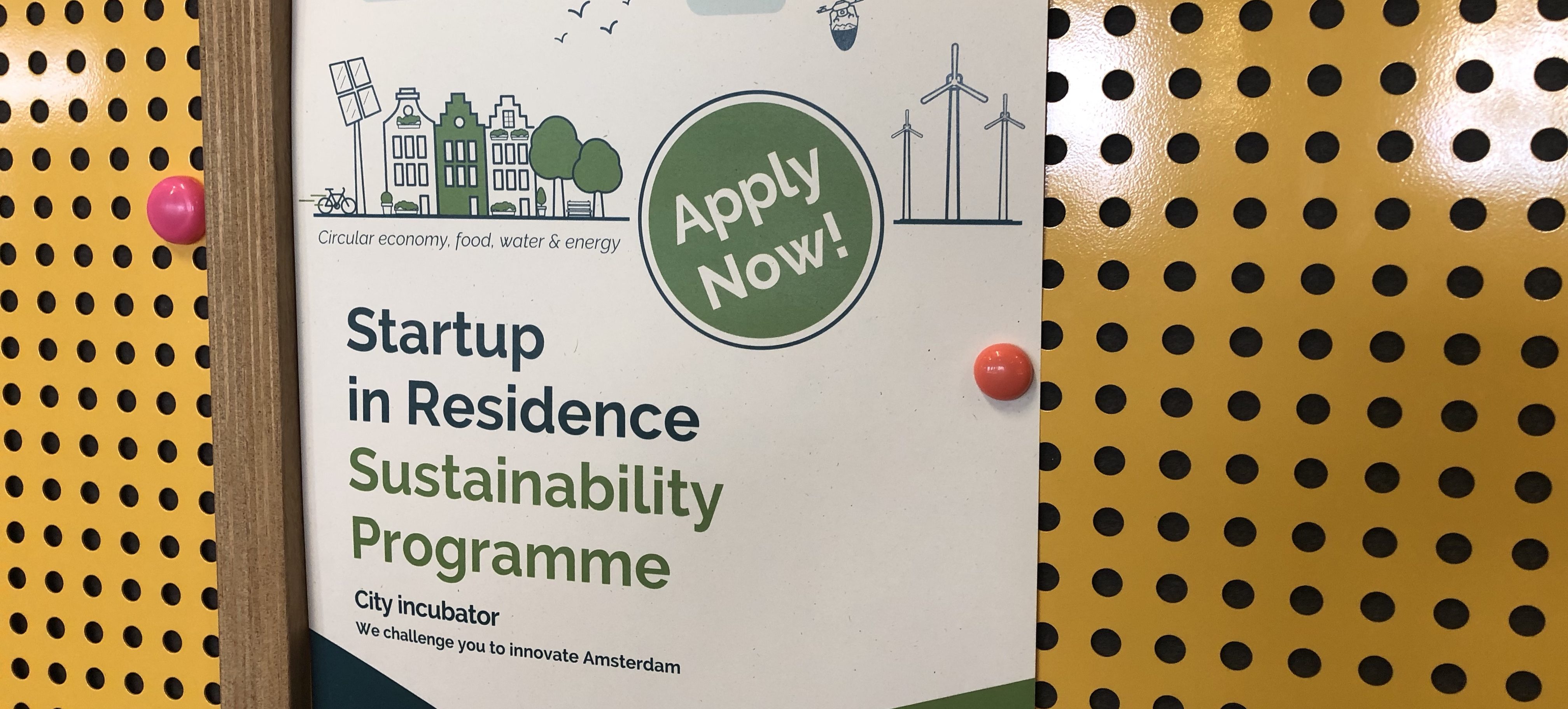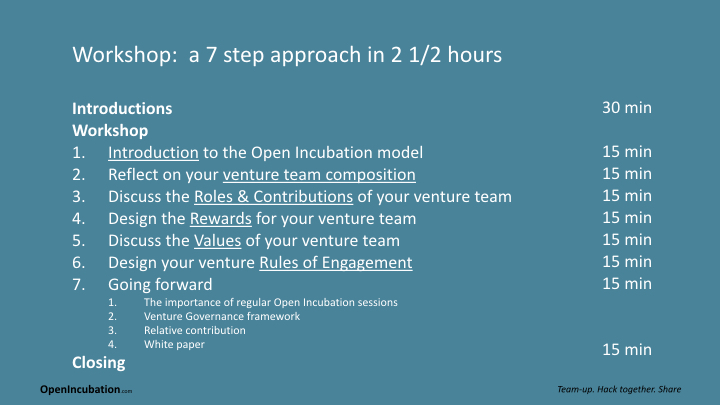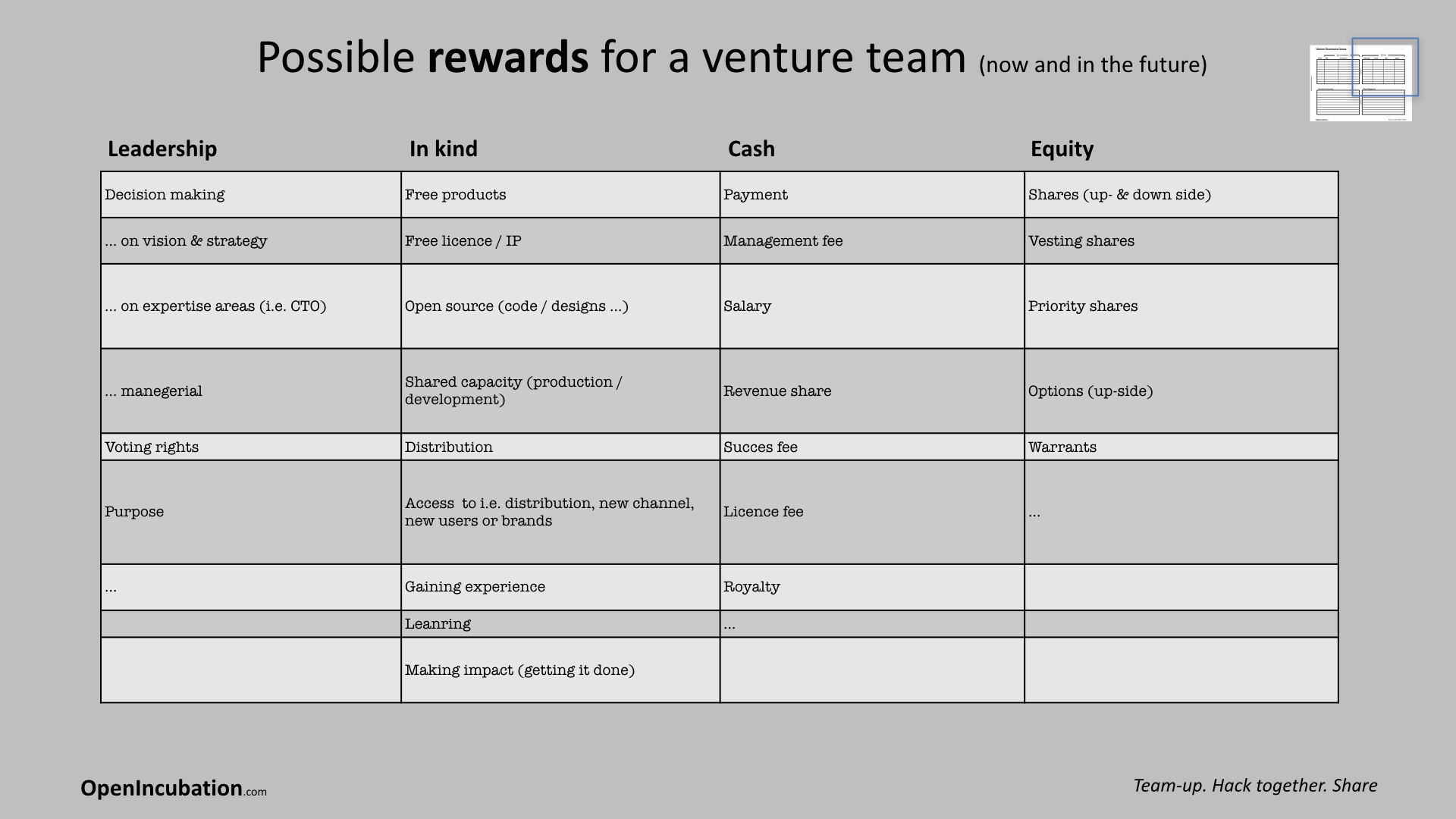Most successful companies and organisations once started as a project. Open Incubation is a governance model for venture teams to enable effective collaboration between participants during the journey of a start-up, from incubation to incorporation. The mission of Open Incubation is to help entrepreneurs to team-up, hack together and share.
To facilitate venture teams to discuss and apply Open Incubation, we have designed the Venture Governance Canvas. You can download a printable version of the canvas on openincubation.com
We recommend to print the Venture Governance Canvas on A0 format. For a small venture team consisting of three to four members A3 will do as well. Use as much as possible Post-It notes as the drafting is a dynamic process that requires you to go back and forth.
We believe that the best way to practise Open Incubation is to facilitate an Open Incubation lab session where the venture team works together to shape their venture governance based on the Venture Governance canvas. An Open Incubation lab consists of 4 building blocks: the Roles & Contributions, Rewards, Values and Rules of Engagement.
In the following paragraph, the four building blocks of Open Incubation will be introduced through the lens of a venture team that works together in a lab session to create a tailored venture governance.
The Venture Governance Canvas: 4 building blocks
During an Open Incubation Lab, a venture team comes together in a 3 to 4 hour work session. They have split-up the session following the four building blocks of the Open Incubation governance framework depicted below.
The ambition of the team is to have a completed first draft of the Venture Governance Canvas by the end of the session.
I. Roles & Contributions
In the first building block the venture team makes the envisaged Roles & Contributions of the team members explicit. Open Incubation recognises six different roles for venture team members. A pre-configured set of roles makes it more convenient for the venture team to allow for differences within the team but to avoid too many exceptions. For a definition of the six roles I refer to the Open Incubation white paper, but for now it is sufficient to know that we distinguish between founders, founding investors, key contributors, business partners, friends, family & crowd and investors.
Most likely, the team will encounter difficulties in precisely defining their roles and contributions. That’s no problem at all, as the development of the governance model is an interactive process. We suggest to discuss the preliminary ideas on Roles & Contributions again after an overview of the envisaged Rewards has been created and (preliminary) allocated to the team members.
II. Rewards
In Rewards, the second building block, the venture team will brainstorm about the possible benefits and rewards their start-up could offer. Most teams experience this is a very rewarding and creative process. There is so much more to offer than cash and equity only. Once, there is a collective view on the ‘currencies’ the venture has to offer, the different rewards will be allocated to the team members. Clearly, the rewards need to be in balance with the roles of the venture team members and their contributions. For early stage venture teams, especially those which operate at a project level, fair contributions and rewards – both absolute and relative – are critical for teams to establish trust and effective collaboration.
III. Values
The third building block ‘Values’ bridges the the first two building blocks with the Rules of Engagement (the fourth building block). Venture teams discuss the key values of their venture. Even though there is a variety of values to choose, we see a number of values returning in high performing venture teams. Values are answering questions such as: ‘What is important to us?’, ‘What is our purpose?’ and ‘Why this venture?’ Values give teams an intrinsic sense of direction. If well rooted, values help venture teams to overcome serious dips, pivots and scaling issues.
IV. Rules of Engagement
After the venture team has agreed upon its purpose and values, the team generally will experience no difficulties in discussing the ‘Rules of Engagement’, the fourth building block of Open Incubation. In the Rules of Engagement section, the venture team not only agrees on how they engage with each other today, but also how they will engage if things turn out to be different. The Rules of Engagement will provide the venture team with guidance in difficult times during pivots, the transition from a project to a company and the following scaling phases.
To apply the four building blocks of Open Incubation, venture teams need to review, discuss and update the Open Incubation Canvas on a regular basis. The frequency of the evaluation depends on the pace of the pace of the venture development.
A free download of the Venture Governance Canvas is available on openincubation.com
